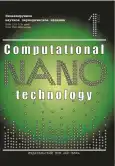Development of a Visual Odometry Model Based on Sensors and Video Stream Analysis
- Authors: Danilova S.D.1
-
Affiliations:
- Financial University under the Government of the Russian Federation
- Issue: Vol 11, No 1 (2024)
- Pages: 36-47
- Section: MATHEMATICAL MODELING, NUMERICAL METHODS AND COMPLEX PROGRAMS
- URL: https://journals.eco-vector.com/2313-223X/article/view/631118
- ID: 631118
Cite item
Abstract
The article is devoted to the development of a visual odometry model based on sensors of an inertial measuring device and the analysis of a video stream arriving in real time. Modeling is based on the analysis and evaluation of methods for measuring the correct coordinates of a moving object, systems for estimating the movement of an object in three-dimensional space, algorithms at intermediate stages of image processing, principles for selecting special points on the frame and optical flow for selected points.
Full Text
About the authors
Soelma D. Danilova
Financial University under the Government of the Russian Federation
Author for correspondence.
Email: sddanilova@fa.ru
ORCID iD: 0000-0003-4143-078X
Cand. Sci. (Eng.), Associate Professor, associate professor, Department of Data Analysis and Machine Learning; Faculty of Information Technology
Russian Federation, MoscowReferences
- Bradski G., Kaehler A. Learning OpenCV: Computer vision with the OpenCV Library. O’Reilly Media, Inc., 2008. 580 p.
- Hartley R.I., Zisserman A. Multiple view geometry in computer vision. Second Edition. Cambridge, UK: Cambridge University Press, 2004. 655 p.
- Hamzah R.A., Ibrahim H., Hassan A.H.A. Stereo matching algorithm for 3D surface reconstruction based on triangulation principle. In: Information Technology, Information Systems and Electrical Engineering (ICITISEE). International Conference on IEEE, 2016. Pp. 119–124.
- Burdin P.A. Universal inertial navigation sensor on a microcontroller. St. Petersburg, 2016.
- Calculation of optical flow by the Lucas-Canada method. Theory. URL: https://habr.com/ru/post/169055 (data of accesses: 12.12.2023).
- Deryugina E.O., Borsuk N.A., Vasina E.V. An approach to the implementation of 3D models of exclusive museum exhibits based on their photographs. Electromagnetic Waves and Electronic Systems. 2019. Vol. 24. No. 7. Pp. 48–55. (In Rus.) doi: 10.18127//j15604128-201907-08. EDN: YWGUGN.
- Kirnos V.P., Antipov V.A., Kokovkina V.A. et al. Constructing a depth map using a camera with a wide-angle lens of the fisheye type. Radio Engineering. 2020. Vol. 84. No. 2 (3). Pp. 64–71. (In Rus.)
- Kokovkina V.A., Antipov V.A., Kirnos V.P. et al. Detection of landmarks based on the data of a laser scanning system based on contour analysis in the problem of simultaneous localization and map construction during the movement of an autonomous mobile robot. Successes of Modern Radio Electronics. 2020. No. 2. Pp. 22–29. (In Rus.)
- Kochkarov A.A., Kalinov I.A. A software package for spatial navigation and monitoring based on a visual odometry algorithm. Tver: Scientific Research Institute “Centerprogramsystem”, 2016. Pp. 175–180.
- Lyubutin P.S. Image analysis in the optical deformation assessment method. Dis. ... of Dr. Sci. (Eng.): 05.13.01. Tomsk, 2021. 304 p.
- Mikhailova S.S., Danilova S.D., Grineva N.V. Investigation of methods of automatic stitching of panoramic images. Computational Nanotechnology. 2023. Vol. 10. No. 1. Pp. 36–48. (In Rus.) doi: 10.33693/2313-223X-2023-10-1-36-48. EDN: QBMLXT.
- Fundamentals of stereovision. URL: https://habr.com/ru/post/130300 (data of accesses: 12.12.2023).
- Antipov V.A. Improving the accuracy of camera positioning in an applied television system using an extended Kalman filter. Dis. ... of Cand. Sci. (Eng.): 2.2.13. Yaroslavl, 2021. 129 p.
- Rabochy A.A. Visual odometry in machine control methods. St. Petersburg, 2017. 28 p.
- Roshchupkina S.N. Terrain modeling based on satellite images. St. Petersburg, 2019. 36 p.
- Fursov V.A., Minaev E.Yu., Kotov A.P. Technology of visual odometry based on observations of a reference surface with correction of coordinate estimates. In: Proceedings based. Materials of the VII International Conference and Youth School (Samara, September 20–24, 2021). Vol. 3. Samara: Samara National Research University named after academician S.P. Korolev, 2021. P. 33712. EDN: ACVQXF.
- Cherskikh E.O. Conceptual model of the ontology of a sensory system with an event-based method of information processing. Sensory Systems. 2022. Vol. 36. No. 2. Pp. 124–135. (In Rus.). doi: 10.31857/S0235009222020020. EDN: TEGRFO.
Supplementary files


















